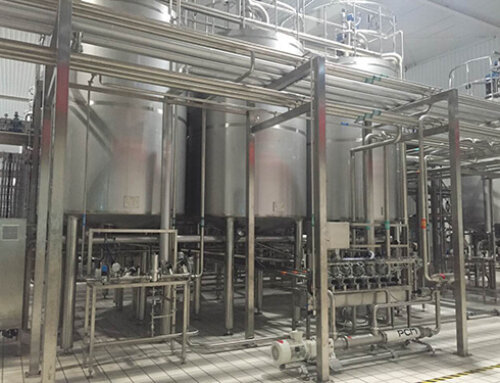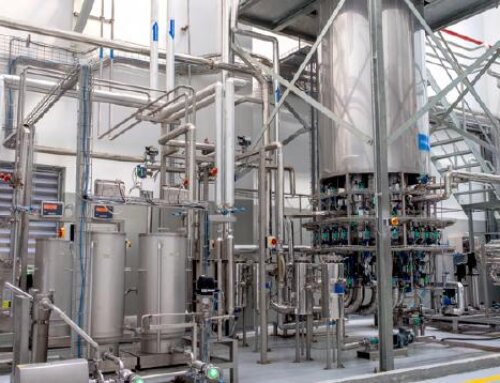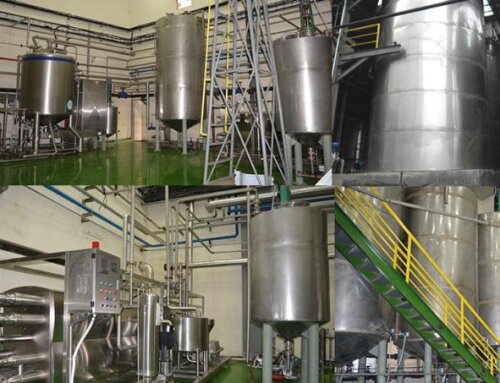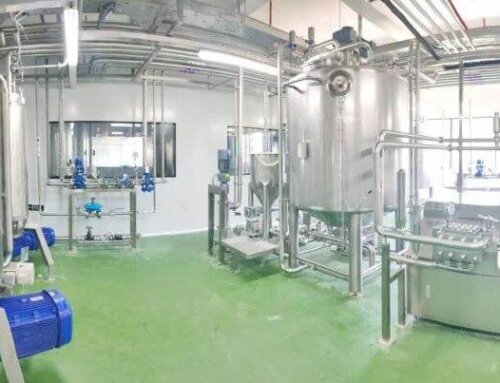Whether it is a milk beverage or a fruit juice blended beverage, certain additives need to be added in order to increase the flavor, color and shelf life of the product. Choosing the right additives can not only improve the quality of juice, but also be loved by consumers, thereby increasing sales. Below I will give a brief introduction to the commonly used additives in soft drinks and beverage plants:
Additives In Soft Drinks Introduction
Purified water: Purified water is one of the most important raw materials in beverage production, and it is also a solvent for dissolving other ingredients. Therefore, the quality of water directly affects the quality of the finished product. Beverage water is best to use clean mountain spring water or deep well water as the water source. After use the RO system softened and filtered, it is stored in a stainless steel tank for later use.
Sweeteners: Sweeteners are food additives whose main purpose is to impart sweetness to beverages, which can adjust the sweetness of beverages, while also preventing beverages from spoilage and anti-oxidation. White granulated sugar is the main additive of food and beverage. It has high solubility and little change in PH value. It is welcomed by most beverage companies. In addition, natural sweeteners such as glucose syrup, fructose syrup, and maltose are also widely used in food and beverages.
Sour agent: Sour agent not only imparts sourness to food and controls the acidity and alkalinity of the food and beverage, but also has the effects of increasing appetite, preventing beverage browning and color protection. Most of the sour additives in food and beverages are organic acids, such as citric acid, tartaric acid, malic acid, lactic acid, gluconic acid and so on.
Spices and essences: Flavor substances added to enhance the flavor of food, called edible flavors. Spices and essences can make beverages with fragrance, so that people feel pleasant enjoyment when drinking. Natural flavors also have antiseptic, antiseptic and therapeutic effects. The spices in soft drinks mainly include plant-extracted spices, citrus oils and some artificial synthetic flavors.
Pigment: Pigment is a substance that imparts color to food and improves the color of food. It can also be divided into natural pigments and artificial pigments. Natural pigments are mainly organic pigments extracted from animals and plants, such as green chlorophyll, orange carotene, beet red, curcumin, etc. Artificial pigments mainly refer to artificially synthesized pigments, which are bright in color, not easy to fade, good stability, and easy to dissolve.
Preservatives: Preservatives are food additives that can kill, inhibit or prevent the growth of microorganisms. Except for high-pressure sterilizing technology or aseptic production lines, soft drinks generally use preservatives. Common preservatives are benzoic acid or sodium benzoate, sorbic acid or potassium sorbate, organic acids.
Antioxidant: The color, taste, and aroma of food and beverages are easily oxidized and destroyed. Antioxidants are food additives that can prevent or delay food oxidation to improve food stability and extend shelf life. Commonly used antioxidants are ascorbic acid, sulfur dioxide and sulfite, and glucose oxidase.
Emulsion stabilizer: a food additive used to improve and stabilize the physical properties or tissue structure of each component of food. Emulsifiers have a series of surface-active effects in the solution, such as emulsification, dispersion, foaming, defoaming, solubilization, etc. The emulsifiers used in food mainly include gum arabic, agar, pectin, gelatin, guar gum, xanthan gum, etc.
Additives Dissolving Equipment
Some of the above food additives are in solid powder form, and some are in liquid form. To make these raw materials dissolve well, you need to use a high-shear emulsification tank or a water-powder mixer. When working, these auxiliary materials were added to the tank in sequence according to the formula, and then the high-speed emulsifier was turned on. Under the action of high-speed shearing and stirring, these auxiliary materials were rapidly emulsified and homogenized and blended evenly. The water powder mixer is composed of blending pump, power pump, V-shaped powder feeding port and electronic control cabinet, and it is widely used for dissolving high viscosity liquids and powder products.





